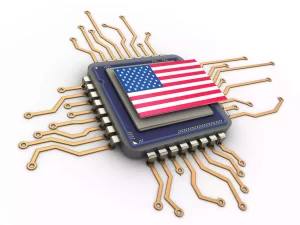Introduction
In a bold and strategic move, Intel and a consortium of 14 Japanese companies have decided to repurpose Sharp’s underutilized liquid crystal display (LCD) plants in Japan for semiconductor research and development. This innovative collaboration aims to reduce costs for Intel and its partners while providing a financial lifeline to the struggling electronics manufacturer, Sharp. The alliance is set to focus on advancing semiconductor production technology, particularly in back-end chip production processes such as assembly.
Read More:6 Prerequisites for Pursuing M.Tech in VLSI: An In-Depth Guide – techovedas
A Strategic Collaboration
Intel, in collaboration with 14 Japanese partner companies, will use Sharp’s LCD plants for semiconductor research and development.
This partnership is expected to significantly reduce costs while providing much-needed financial support to Sharp.
The consortium includes prominent Japanese suppliers such as Omron, Resonac Holdings, and Murata Machinery, highlighting the strategic importance of this alliance.
Leveraging Underutilized Facilities
The collaboration will focus on back-end chip production processes, including assembly, at Sharp’s underutilized LCD factories.
By maximizing the use of existing clean rooms, Intel and its partners can reduce the costs associated with building new research and development (R&D) infrastructure.
Sharp, in turn, will benefit financially from the lease agreements, generating extra income from its underutilized facilities.
Partners in Innovation
The alliance includes leading Japanese companies:
- Omron
- Resonac Holdings
- Murata Machinery
These companies will bring their expertise to the table, driving innovation in semiconductor production technologies.
The collaboration aims to enhance research capabilities in chip packaging and other back-end processes, leveraging the strengths of each partner.
The Role of Sharp
Sharp’s participation is crucial for the success of this initiative. As the owner of the facilities, Sharp will benefit from leasing agreements, providing a financial boost to its struggling operations.
This partnership aligns with Sharp’s strategic goals of leveraging existing assets to generate revenue and stay competitive in the evolving electronics market.
Background of the Collaboration
The semiconductor industry faces increasing pressure to innovate and meet growing demands for advanced technology.
Intel, a leader in semiconductor manufacturing, aims to enhance its research capabilities through this collaboration.
The partnership reflects a broader trend of global cooperation in the tech industry, driven by the need to optimize resources and accelerate technological advancements.
Why This Matters
This collaboration is significant for several reasons:
- Cost Efficiency: Utilizing Sharp’s existing facilities helps reduce the costs associated with building new R&D infrastructure.
- Financial Support for Sharp: The lease agreements provide Sharp with a steady income stream, helping stabilize its financial situation.
- Technological Advancement: By combining expertise from different companies, the partnership aims to accelerate the development of cutting-edge semiconductor technologies.
- Strengthening Supply Chains: Collaborative efforts like this help strengthen the semiconductor supply chain, making it more resilient to disruptions.
Read More: 5 Most Exciting Startups Building AI Hardware – techovedas
Economic Significance
The economic implications of this collaboration are profound:
- Job Creation: Intel employs over 22,000 people in Oregon, and similar initiatives in Japan are likely to generate numerous job opportunities in both R&D and facility maintenance. Intel expects to add several thousand new permanent and construction jobs as part of its global expansion efforts.
- Regional Economic Boost: Increased activity at Sharp’s facilities will positively impact the surrounding regions, fostering local business growth and infrastructure development.
- Investment Figures: Since Intel’s inception in 1974, the company has invested $59 billion in Oregon alone, contributing $19.3 billion annually to Oregon’s GDP. Similar investments in Japan are expected to have a significant economic impact.
Future Prospects
Looking ahead, this collaboration could set a precedent for similar partnerships in the semiconductor industry.
By leveraging existing facilities and fostering cross-industry collaboration, companies can drive innovation while optimizing costs.
This approach benefits the companies involved and contributes to advancing semiconductor technology to meet future demands.
Conclusion
Intel decision to utilize Sharp’s LCD plants for chip research marks a significant step in the evolution of semiconductor production.
This strategic collaboration highlights the importance of leveraging existing assets and fostering partnerships to drive innovation and efficiency.
As the semiconductor industry continues to evolve, such initiatives will be crucial in maintaining a competitive edge and meeting the growing demands for advanced technology.








